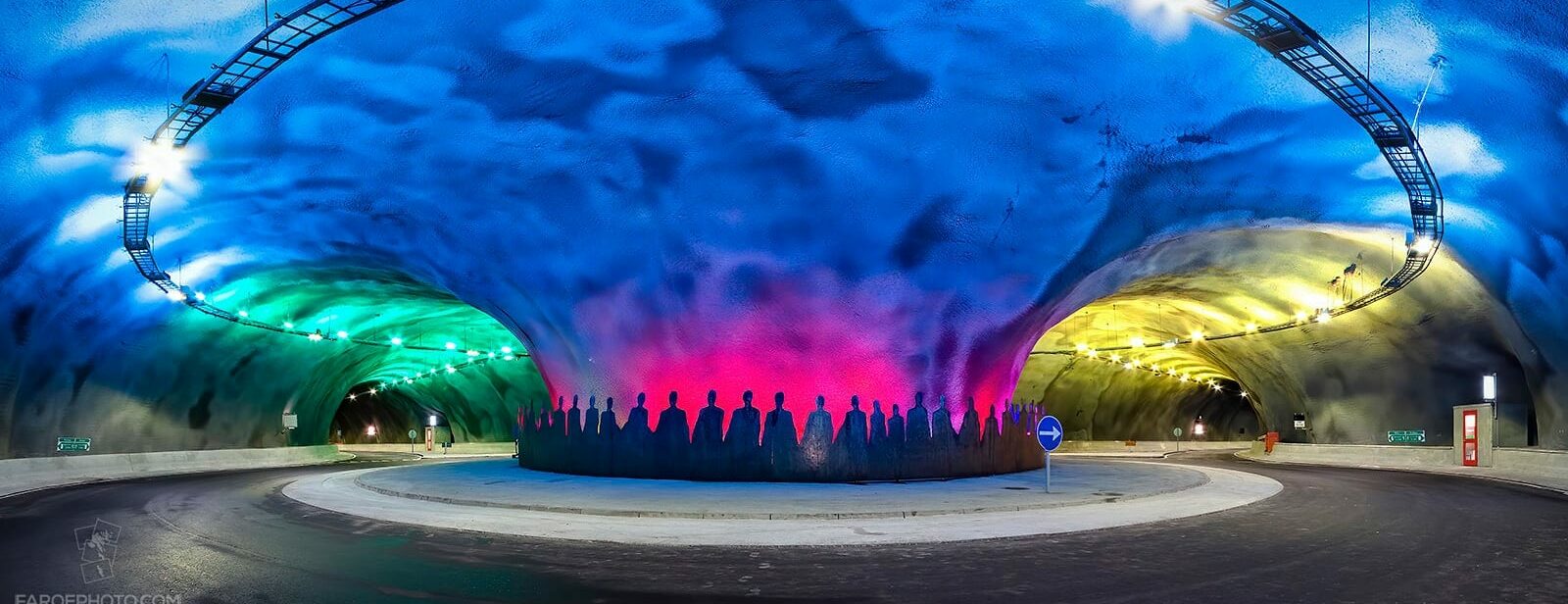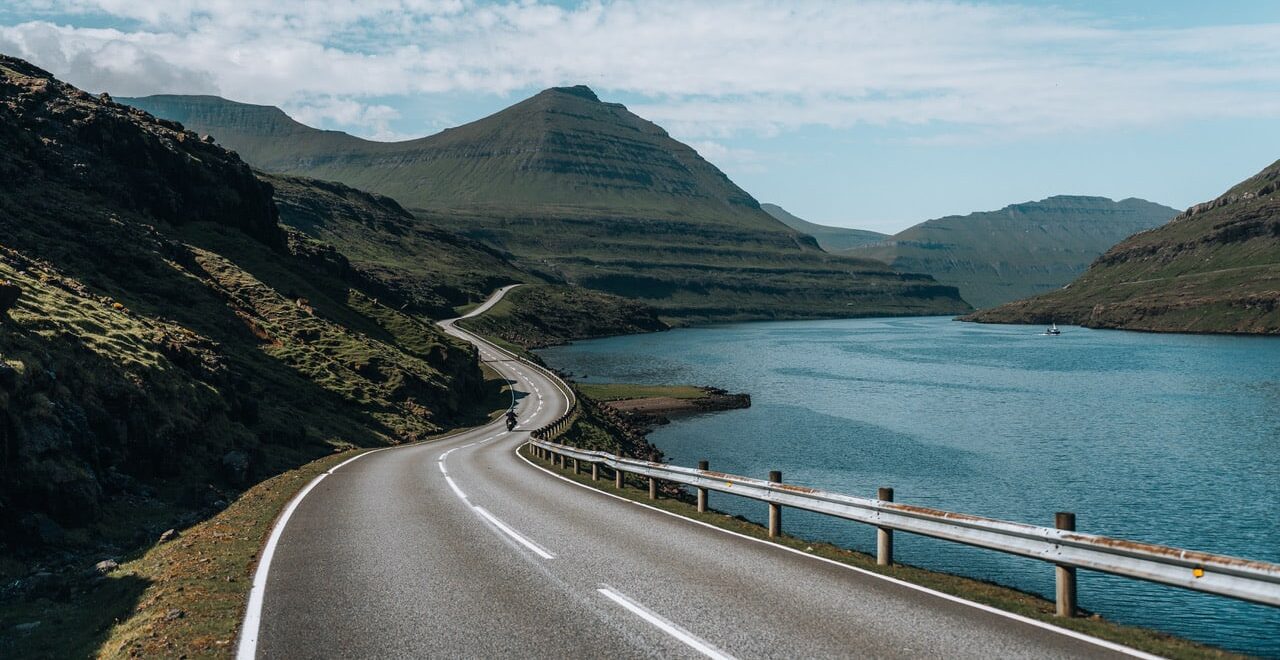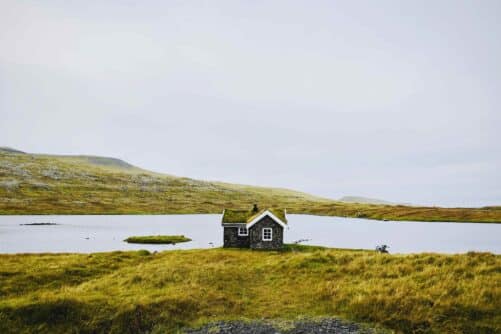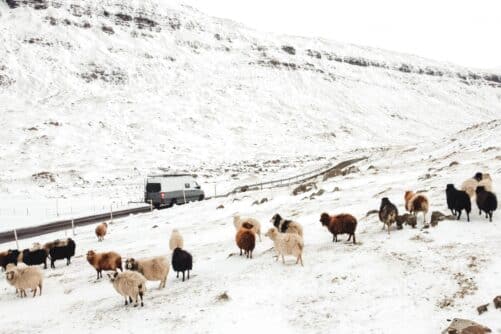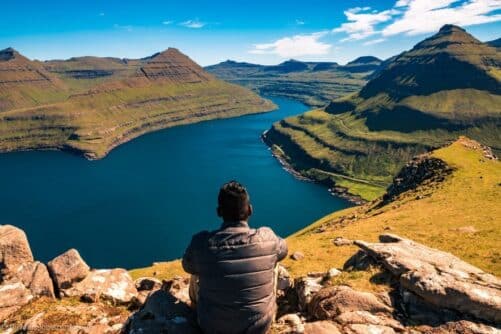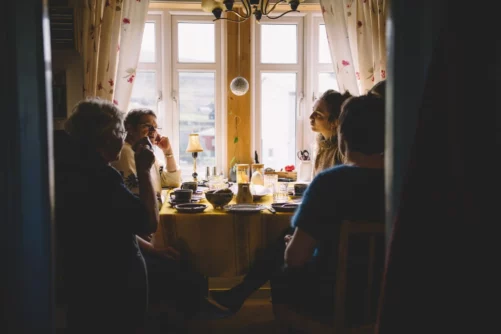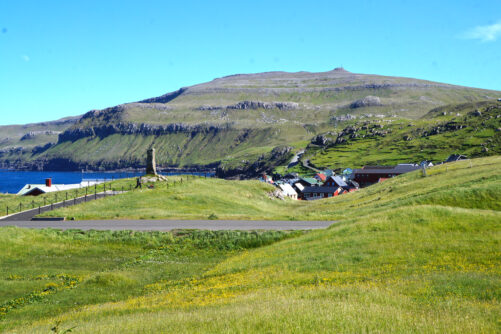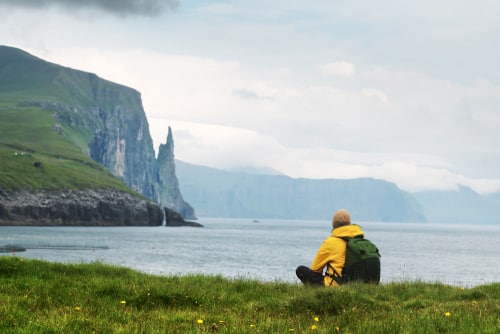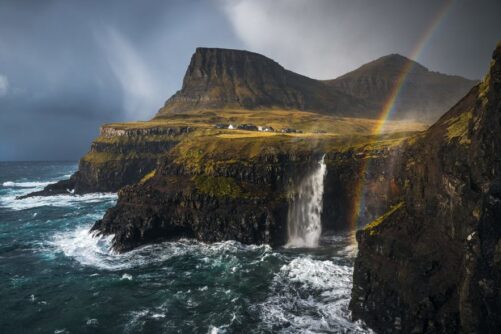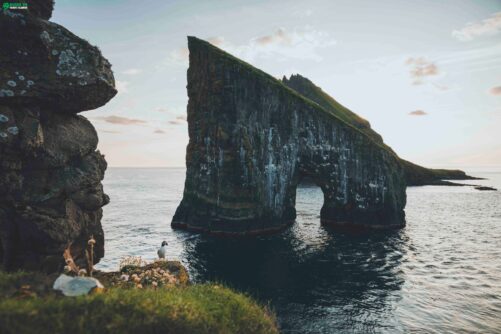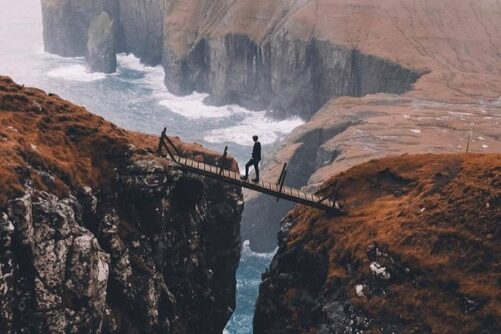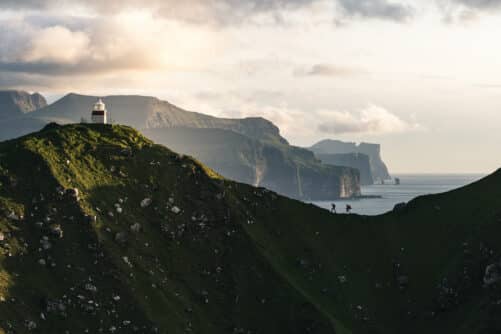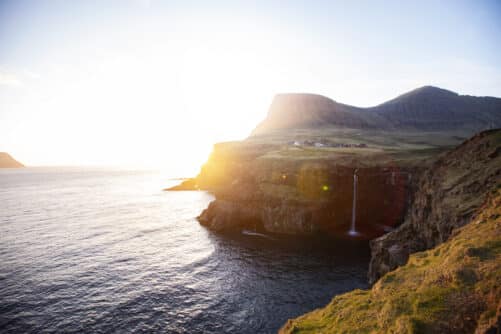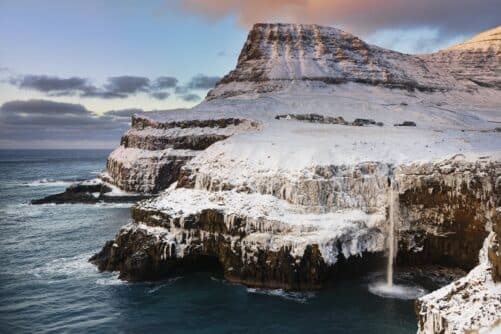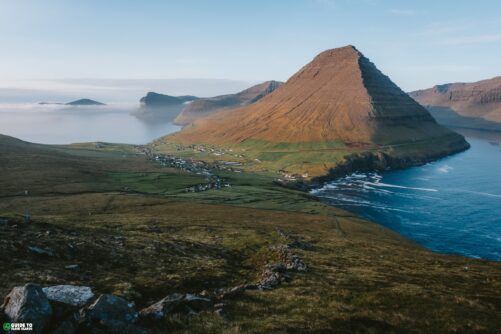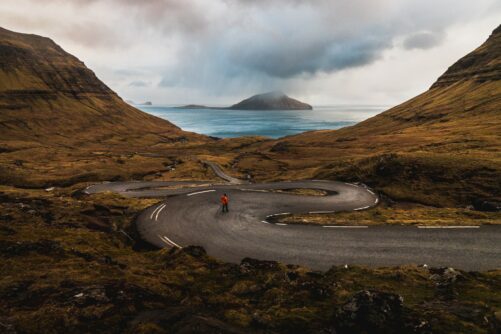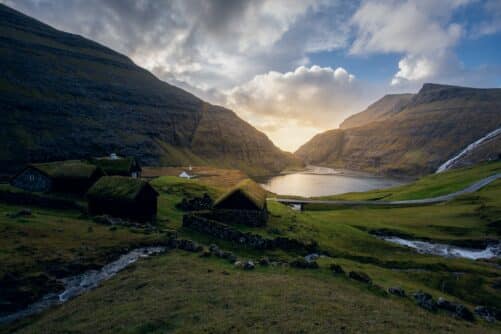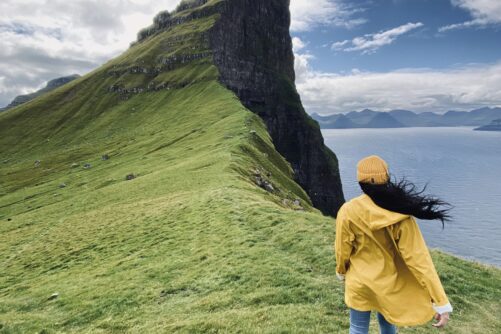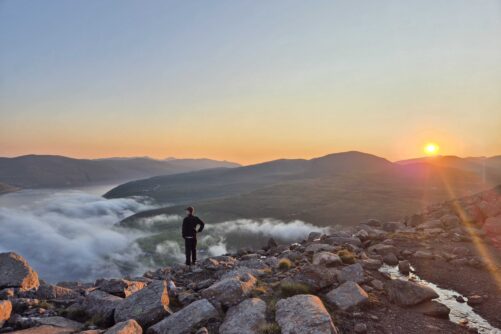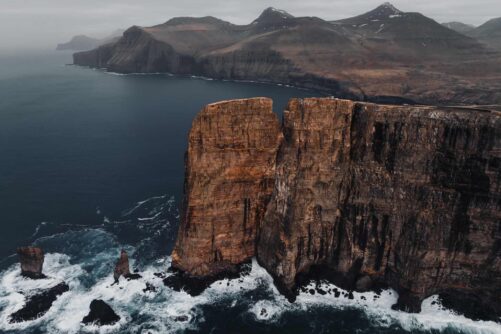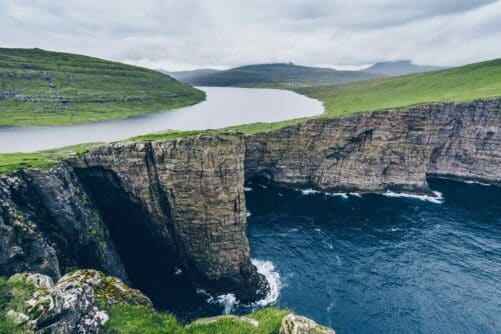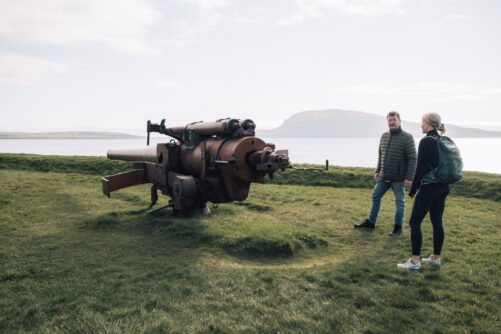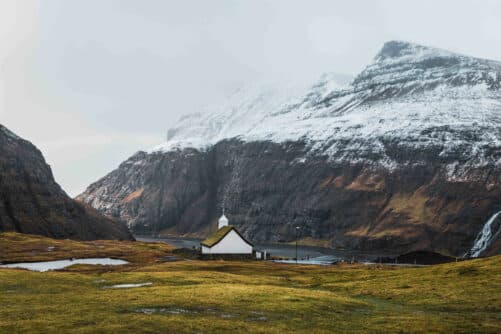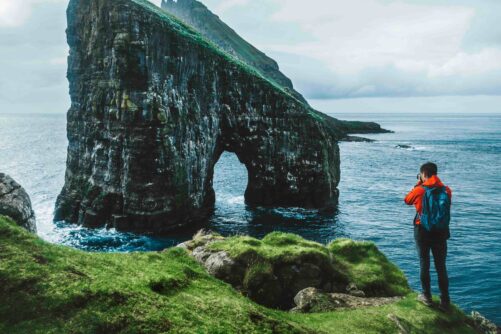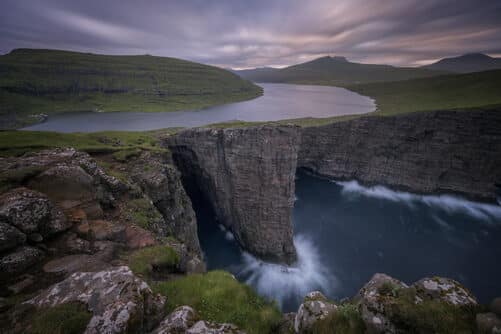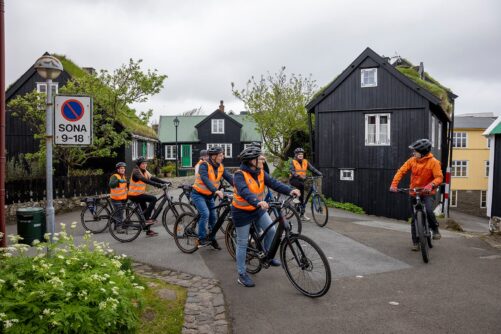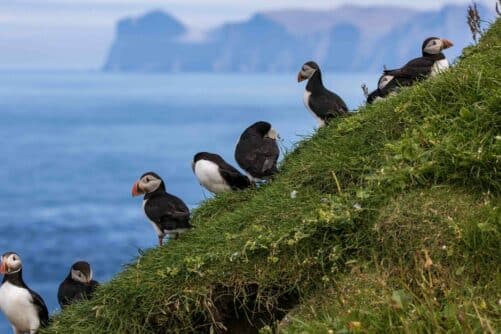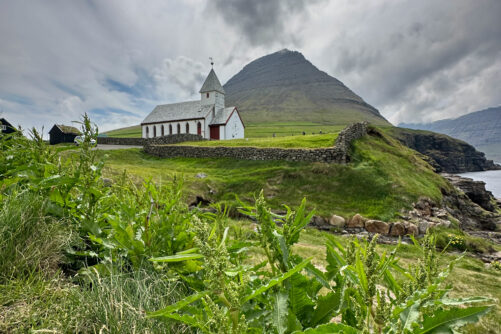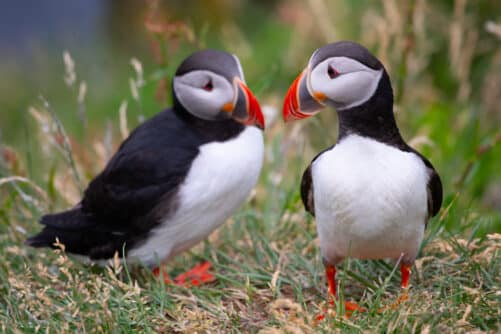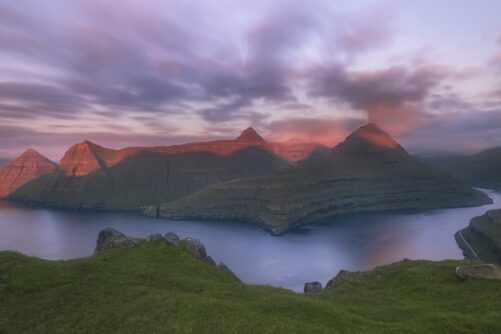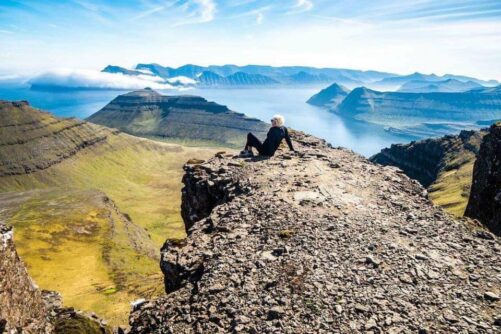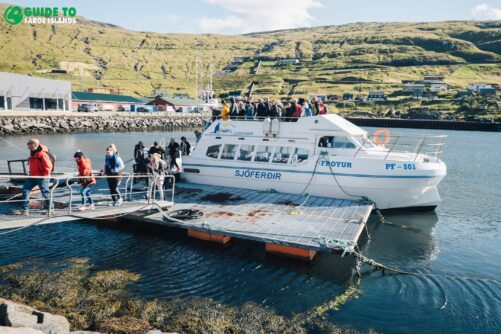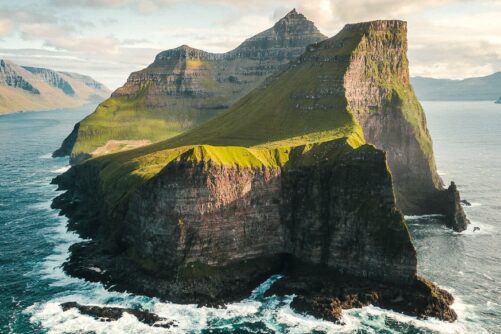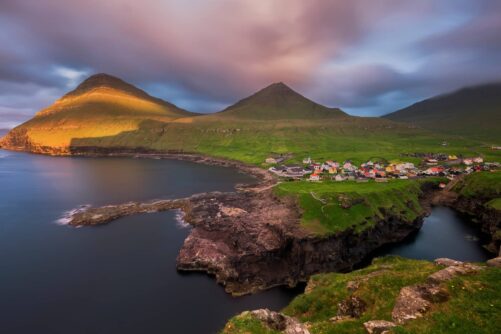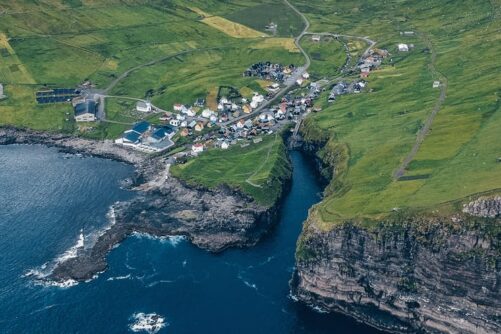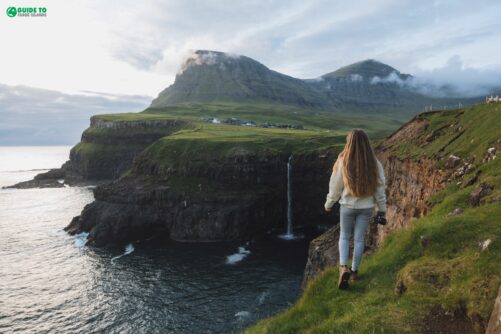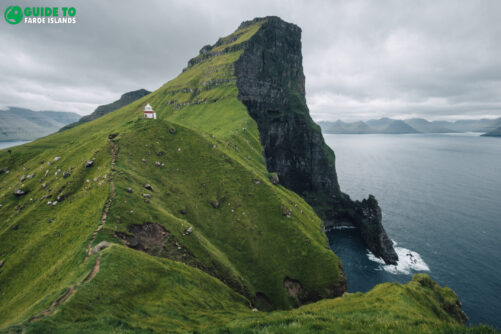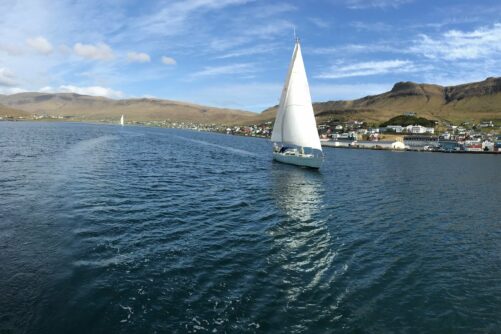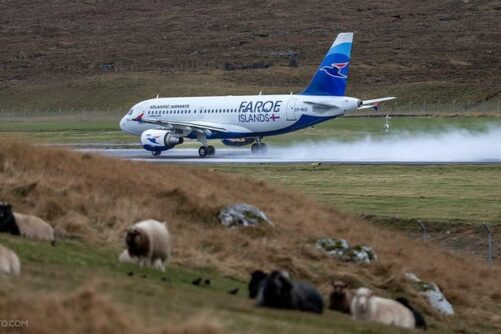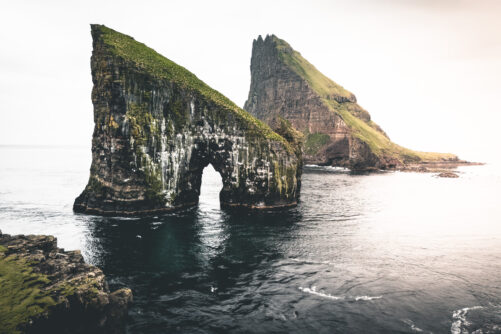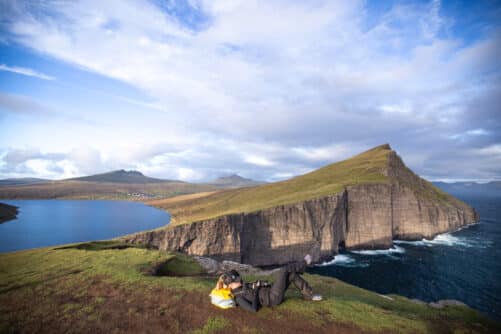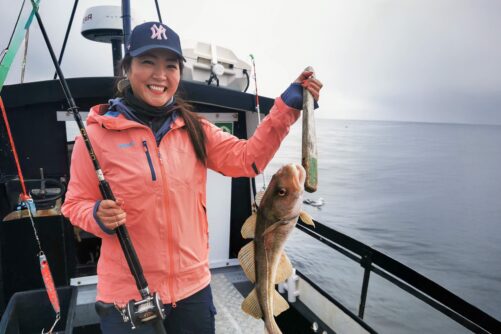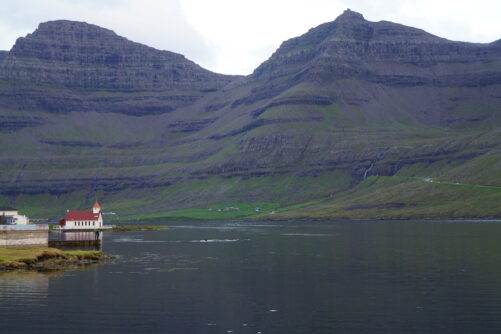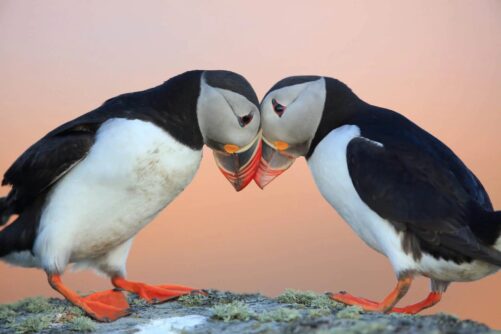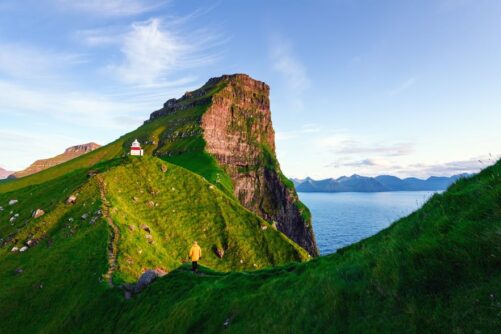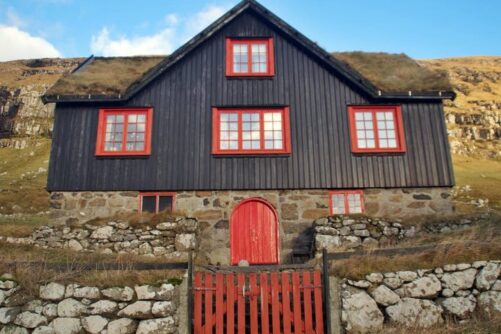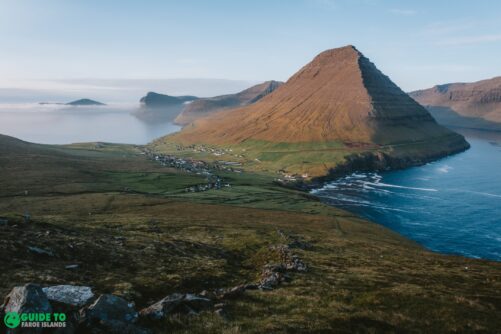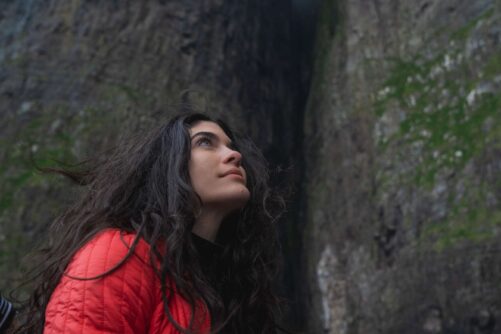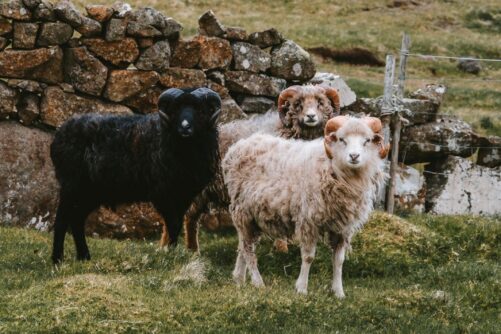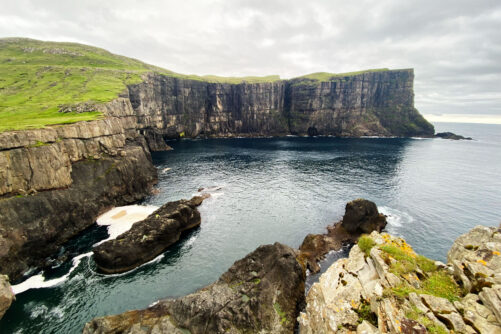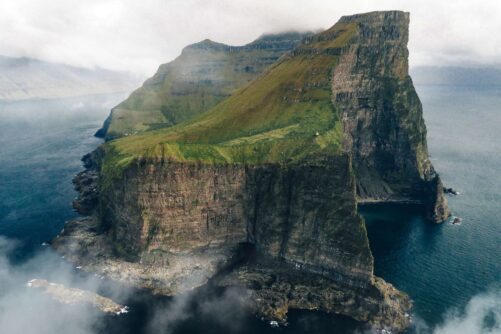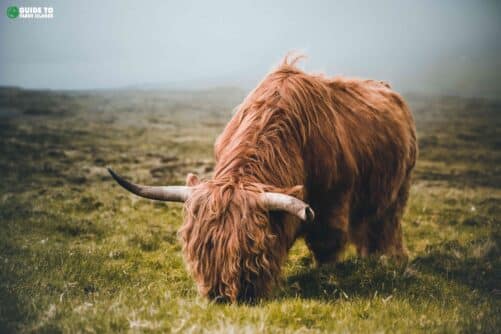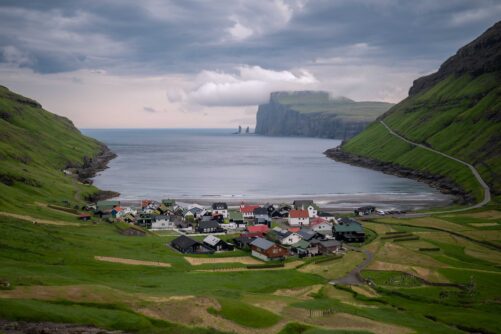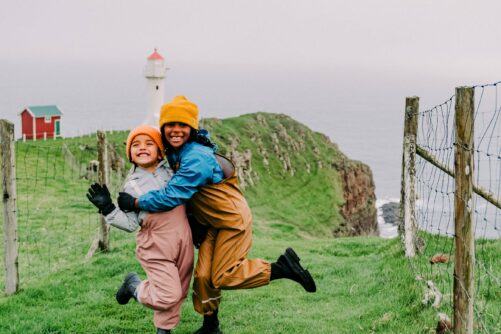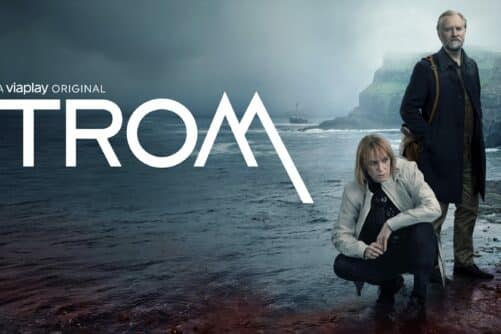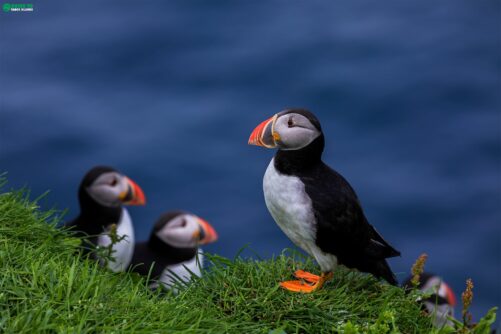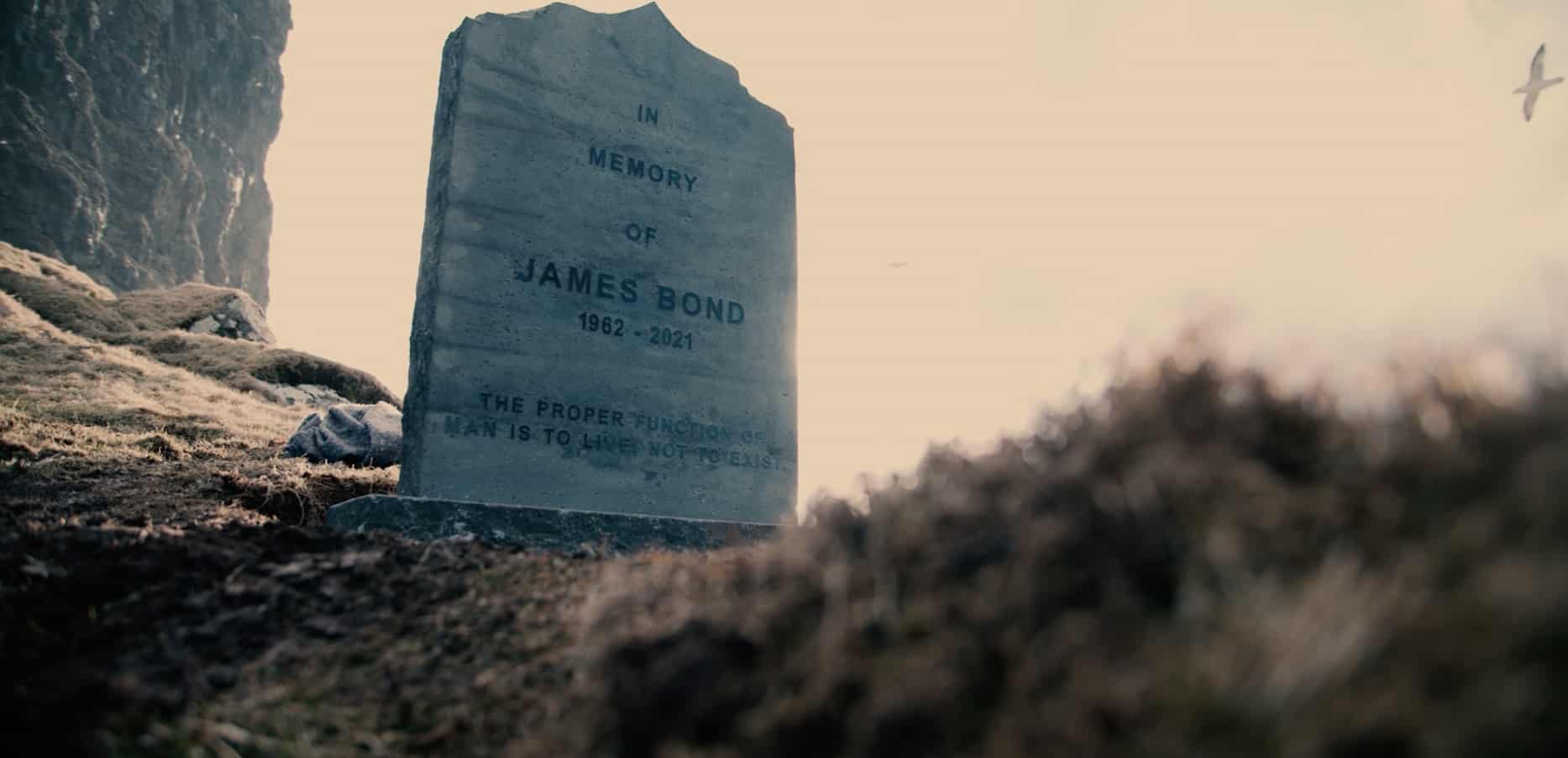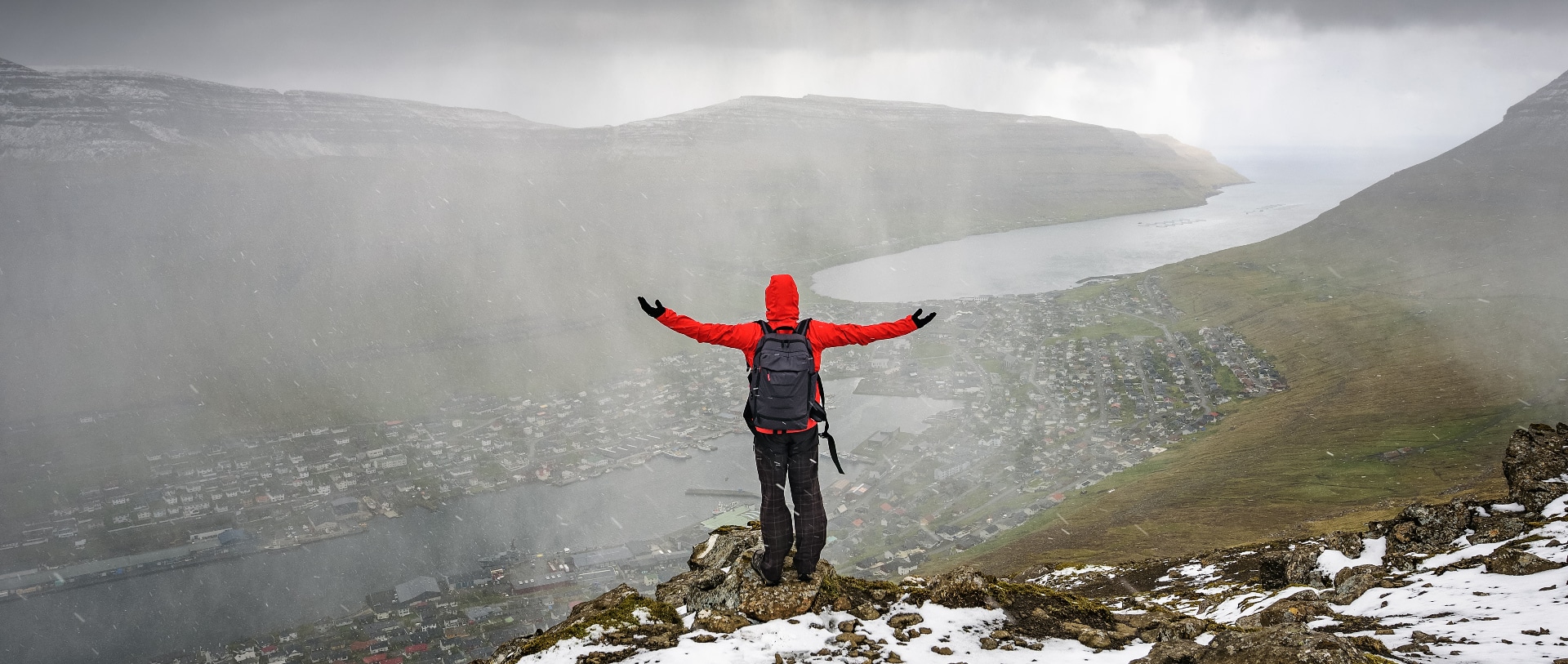

Mikines – Best Artist in the Faroe Islands

Who is the most renowned artist in the Faroe Islands? Looking for a gallery in Tórshavn to experience paintings by the great master of Faroese art Mikines? Find out everything you need to know about Mikines, the best artist from the Faroe Islands.
- Read the complete Guide to Mykines Island
- Discover the widest selection of Mykines Tours
- Book a Vacation Package in Faroe Islands
- Find the Top 10 Tours in the Faroe Islands
The real history of art in the Faroe Islands begins in 1927. Three young artists held an exhibition in Tórshavn, the capital. The young artists were William Heinesen, Jákup Olsen, and Sámal Elias Joensen-Mikines.
It was the youngest of the three exhibitors who was to achieve international attention and spark off a vibrant painting culture among many of his fellow countrymen. Sámal Elias Joensen-Mikines (1906-1979), is the father of art in the Faroe Islands.
From Far-Flung Mykines Island

He grew up in Mykines Island, one of the most isolated of the 18 Faroe Islands. Mikines received his first instruction from a Swedish artist, who had come to Mykines to paint birds.
The young Mikines was also inspired by the poet and artist Mikkjal á Ryggi. He lived in Miðvágur close to Mykines Island. Mikines learned the technique of drawing from the national poet Mikkjal á Ryggi.

Whereas his early paintings are quite naturalistic and record his home surroundings in careful detail, Sámal Joensen-Mikines later become highly original in his use of colour and design. The best of his paintings are psychologically very suggestive.
His paintings then turned symbolic and expressive. You will recognise his sombre style creating a dramatic experience for viewers. He captured the dramatic weather and landscapes in the Faroe Islands with such emotional intensity that he become a household name from a very young age.
First Educated Artist in the Faroe Islands
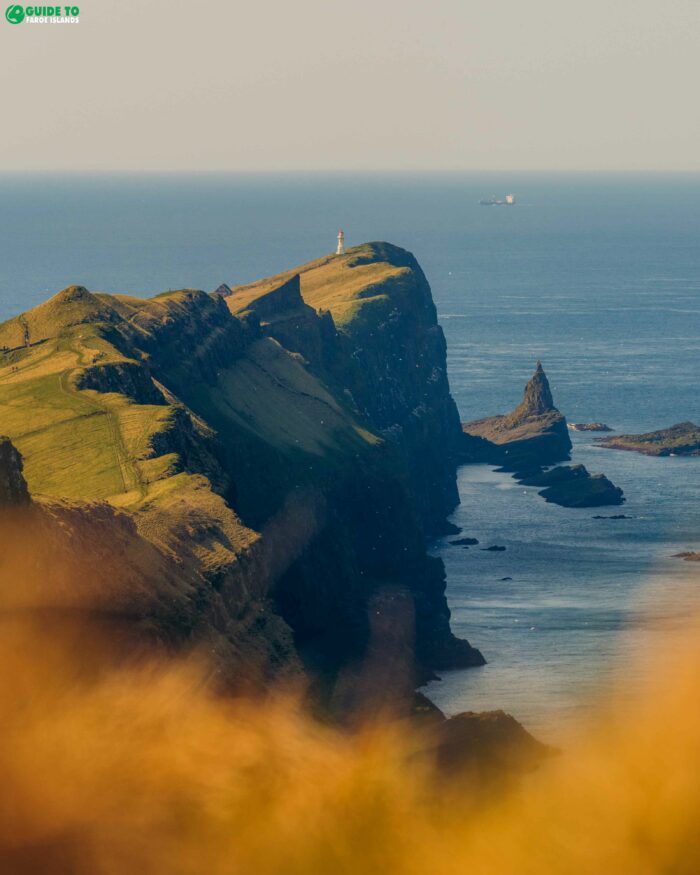
Mikines was the first person in the Faroe Islands to study fine arts. Once educated early in the 1930’s, other Faroe Islanders followed in his footsteps. Meanwhile, art from the Faroe Islands gained popularity in the world of art beyond the Faroe Islands.
The small island of Mykines formed Mikines’ the creative path. Beaten and battered by surf and wind, the island is just as impressive now as back then. People on Mykines lived under severe conditions which too shaped the artist.
Mikines lived most of his life abroad but always returned to his home island for inspiration and solitude. There he experienced the powerful scenery ad the remote village which made up the world of his paintings.
The Evolvement of Mikines Paintings

Mikines’ artistic career was a challenging one with a turbulent personal life. He never stoped developing as an artist. Mikines always searched for new modes of expression, sometimes returning to well-known methods. Paintings by Mikines are divided in two periods.
- Paintings by Mikines before 1942
- Paintings by Mikines after 1942.
In his earliest years he painted landscapes and villages. You can easily recognise Mykines Island in most of these works.
First Mikines Period
From 1933 human suffering became an important subject in his paintings. Death took away many people in the Faroe Islands due to tuberculosis, others were lost at sea. Mikines was heavily affected by this. He felt the suffering and overcame through his art.
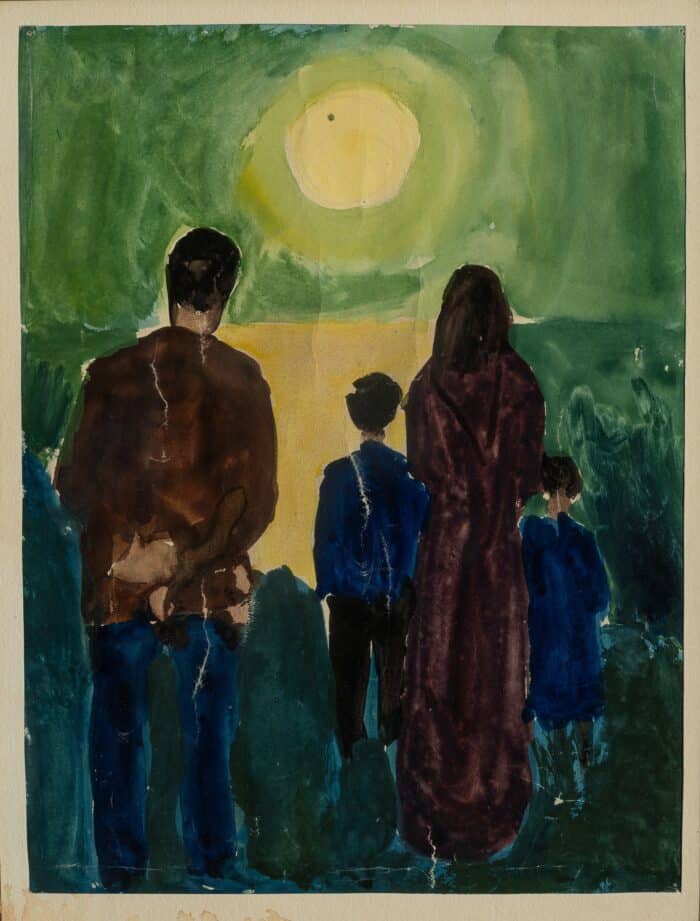
His most productive year was 1934. He painted several of his main works such as Vágsbotnur (harbour area in Tórshavn), Saknur (Loss) and Kring børuna (Around the bier). At an exhibition in Tórshavn the same year, he also exhibited several of his best portraits.
The colours are dark palette of green, grey, black, dark blue and brown. The colours stress the simplicity of the imposing compositions. Village paintings form this period, particularly those from Mykines Island, have a distinctly sad, spiritual tone to them.
Latter Mikines Period
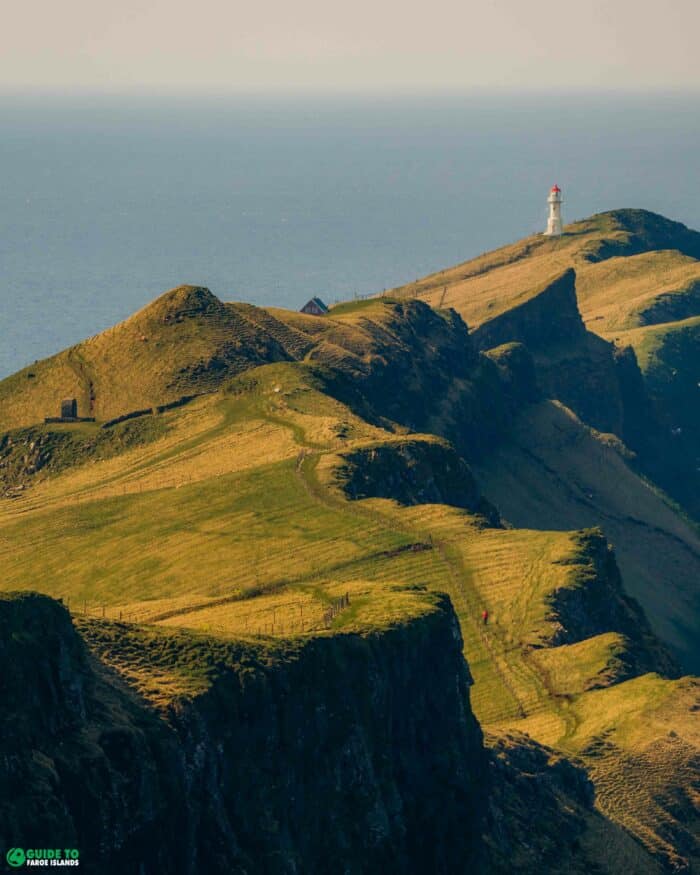
Mikines did his first dráp painting in 1942. This marked the latter period in his career. He painted the battle between life and death. In these paintings you will see the drama and strong emotions. There are sweeping rhythm and movement. These paintings triumphed over the darkness of death. Through them he painted his way towards light and colour.
After the Second World War his art changed completely. He painted landscapes and village scenes in which he focused more and more on the composition rather than the content or story. Mikines became a colourist. He studied the colours in themselves and their effect on one another. Around year 1960 he started using strong complementary colours. The style became more free and daring.
Mikines at the National Gallery

Make sure to visit the National Gallery in the Faroe Islands. This is where you will see most paintings by Mikines in the same building. Mikines acknowledged his indebtedness to the artist Edvard Munch as well as his admiration for El Greco and Delacroix. Pre-book Tickets to the National Gallery of The Faroe Islands.
Mikines’s pinnacle achievement is the large painting Home from the Funeral (1937). You can see this dark art work at the Art Museum in Tórshavn.
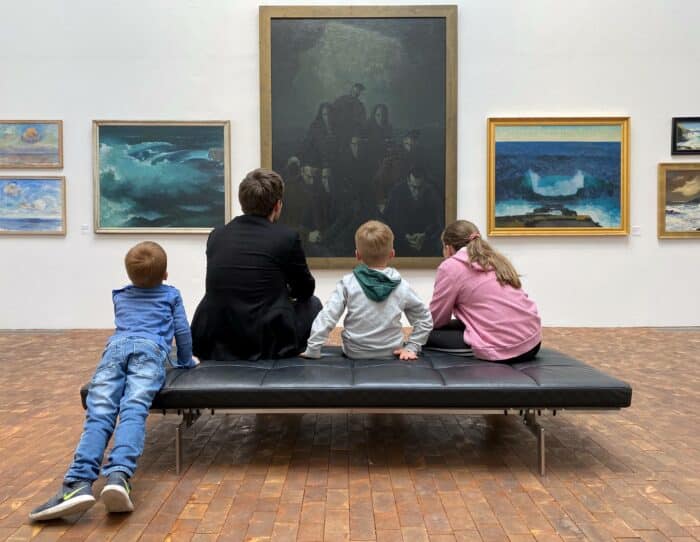
It evokes the inevitability and fatalism of a Greek tragedy. His characters are painted in dark, greenish colours with faces and hands accentuated.
This picture won acclaim for its daring use of lines and shapes. The figures form a steep mountain, in the eternal shape of the landscapes in the Faroe Islands.
Painter of Human Life

Mikines is the painter of human life. He paints the land, the people, the immense sea. You can feel the salty sea and the salty tears in the heavily loaded boat in paintings such as Home from the Funeral.
The grieving people on the boat represent the doubt and depression that often overwhelmed him. Pictures by Mykines in the late 1930s accounted for the deep pessimism and pathos. He had huge personal loss in his family due to disease. Several young men and friends in Mykines were lost at sea in this period adding to the melancholy.
Painting Faroese Identity

From his very first exhibition held in Tórshavn, the Mykines born artist was acclaimed for his ability to capture the heart and soul of the people in the Faroe Islands. Later he got thunderous applause outside of the Faroe Islands.
In all his work, the artist turns to the Faroe Islands. Most of all he kept returning to his native island of Mykines. The artist found his themes on the dramatic island far away from the crowds. As the artist said: “Without this sense of belonging and this world of images, I would lose my identity both as an artist and as a human being”.
Far from major art centres, Mikines developed an expressionist painting style with great attention to atmosphere, light and colour. Mikines has a freedom in his style, without the filters of prevailing trends.
Mikines Final Years

Mikines turned ill as he got older. He was hospitalised for several years before he passed away in 1979.
The painter suffered from mental illness and did only few drawings in his last years. His final work of art was made on his deathbed the same year he died. Mikines was an artist by profession and heart, the greatest the Faroe Islands has seen.
Sámal Joensen-Mikines Exhibition

Want to know more about the best artist in the Faroe Islands? Make sure to visit the National Gallery in Tórshavn where you will find great paintings by this most important local artist. The museum is located next to the National Football Stadium in the Faroe Islands, Tórsvøllur.
You will see great examples of paintings by Mikines at the National Gallery. While there, do also enjoy the expressionism on which his work has influenced artists in the archipelago ever since.
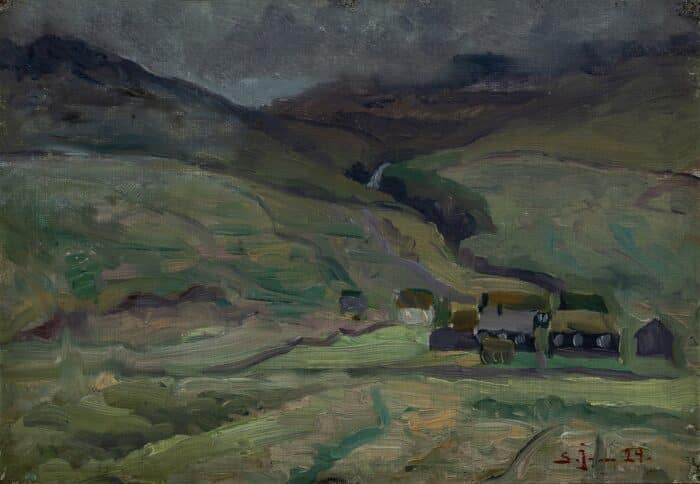
Most visual artists in the Faroe Islands have been inspired by the first professional artist form the island group. The National Gallery in the Faroe Islands is the best place to get a good introduction to some works by the artist from Mykines Island.
Located in peaceful surroundings in one of the only plantations in the island group, the environment at the National Gallery is quite different from the dramatic strokes on the artist’s paintings. The spot has a Nordic vibe to it and is always worth a visit.
International Mikines Exhibition
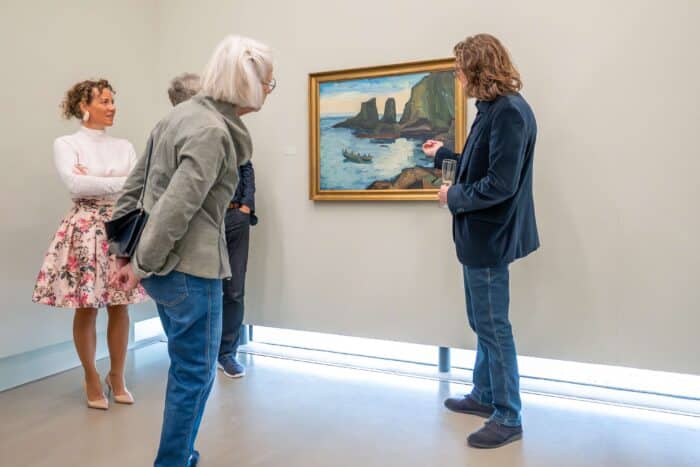
Museum Belvédère in Heerenveen opened “Sámal Joensen-Mikines – Always the Sea” in October 2025. This is the first solo exhibition in the Netherlands with the Faroe Islands’ most celebrated painter. While Scandinavian museums have long recognised Mikines’ significance, Western Europe is now familiarising themselves with his work.
The exhibition came together through unusual circumstances. Led by the King’s Commissioner in the province of Fryslân, Arno Brok, a delegation visited the Faroe Islands to study the archipelago’s language and cultural policy. They were stunned by what they experienced.
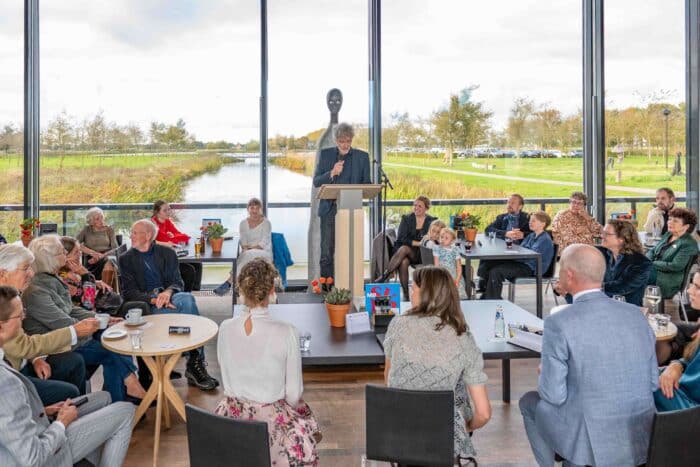
This included Museum Belvédère’s director, Han Steenbruggen, who joined the delegation of Frisian representatives visiting the Faroe Islands. What he witnessed in the middle of the North Atlantic Ocean shaped how the museum would present Mikines. Steenbruggen described traveling north through the islands, watching everything become atomised, shapes reduced to vague planes and veils of colour, pale sun breaking through to cast light across the sea – Mikines’ paintings hidden in every view.
The museum acquired “Túvalagarður – Mykines” specifically for the exhibition, presenting it officially with the King’s Commissioner Arno Brok and local cultural officials in attendance. Museum Belvédère describes his work as somewhere between impressionistic and expressionistic, focusing on light and space.
Landscapes and More
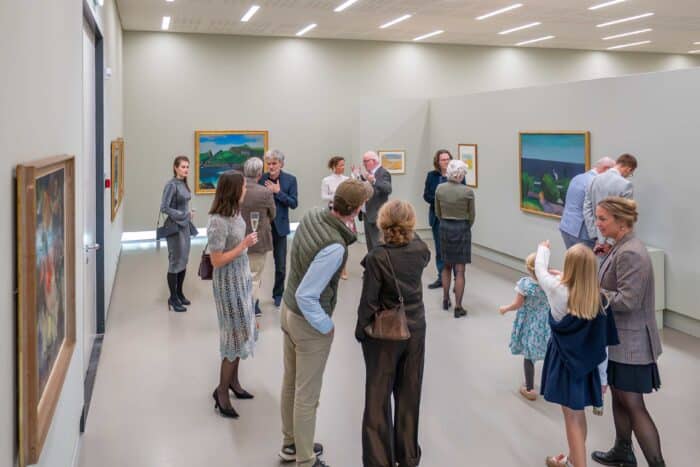
The exhibition features landscapes and sea paintings inspired by his immediate surroundings. You have the sea, rugged hilly landscapes, and small hamlets along the coastline where survival depends on reading weather and water.
Works by Mikines share similarities with Northern Dutch landscape painters represented in Museum Belvédèr’s collection. The Dutch museum specialises in modern and contemporary art from the north of the Netherlands—Friesland, Groningen, Drenthe and North Holland—with artists who often created personal work far from larger art centres. Mikines fits naturally into this context.
From an Outpost ready to be Explored

Indeed, both the Dutch and Faroese artistic traditions developed from cultures where the sea dictates daily life. The horizontal expanses and the psychological weight of sea has shaped how painters in both places approach their work. The museum’s collection focuses on landscape-oriented work that references land, light, air and space, preferring work with a certain degree of stillness. Mikines delivers exactly that.
While Mikines is well known in the Faroe Islands and nearby countries, the exhibition in the Netherlands serves a different purpose – introducing Mikines to those European audiences who have never encountered his work. For a nation of merely 55,000 people, getting a major solo exhibition at a respected European museum validates Faroese cultural production on an international stage.
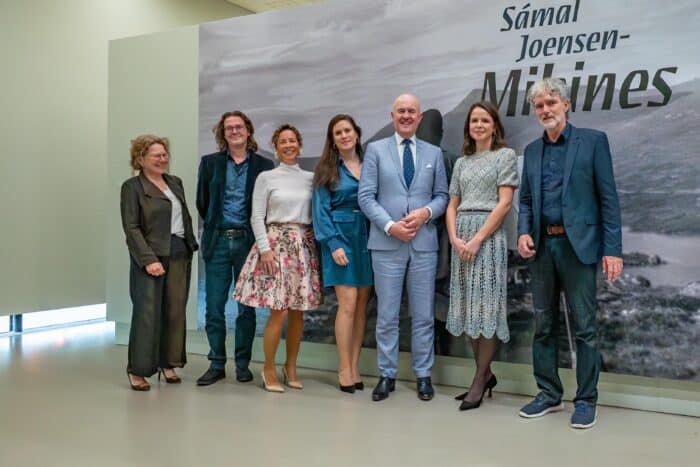
Museum Belvédère took a risk. Foreign artists without name recognition can be hard sells, even when the work is exceptional. Yet the museum’s director and the Dutch delegation understood something crucial after visiting the Faroe Islands: Mikines was not painting exotic landscapes for outsiders. Instead, he was creating deeply personal expressions of his homeland, which in turn gave his work an authenticity that transcended cultural boundaries. He was painting home, in a visual language that would resonate with anyone who has stood on a northern coast watching weather roll in across the water.
You can also get to the island where Mikines was born and raised. Visiting the artist’s leitmotif throughout his life is a truly exceptional experience. Browse the largest selection of Mykines Tours and take the next step.

